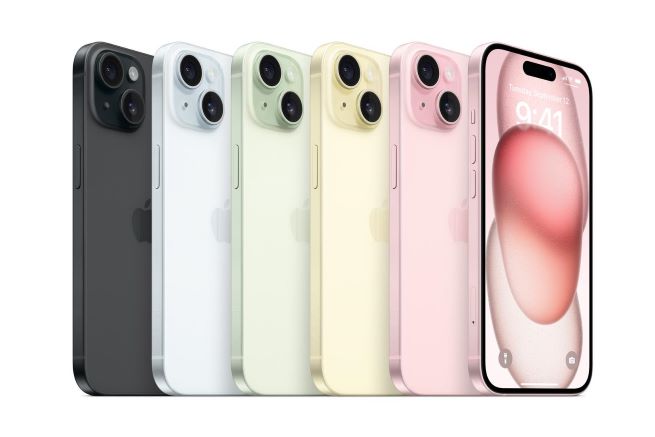
This rivalry extends beyond AI, with Apple reportedly considering the addition of transit card functionality and call recording – features that have been Galaxy strongholds. (Image courtesy of Yonhap)
SEOUL, Aug. 24 (Korea Bizwire) – In a stark contrast of artificial intelligence strategies, Samsung Electronics is pushing to expand its Galaxy AI features to over 200 million devices, including older models, while Apple is taking a more conservative approach by limiting its AI capabilities to its latest iPhone 15 Pro series.
According to industry sources, Apple plans to support its Apple Intelligence system, unveiled in June, only on the iPhone 15 Pro and Pro Max models among its previous releases. This limitation is reportedly due to hardware constraints.
Experts suggest that Apple Intelligence requires at least 8GB of RAM to function smoothly, which the standard iPhone 15 model, with 6GB of RAM, cannot support.
An industry insider explained, “Apple prioritizes on-device processing, which demands superior hardware performance and ample capacity. This is why there’s talk of Intelligence support being restricted to the 15 Pro series.”
On-device processing, a technology that computes data on the device itself without relying on external servers, is a cornerstone of Apple’s strategy, emphasizing user privacy.
The development status of Apple Intelligence also plays a role in this decision. Initially slated for release alongside the iPhone 16 next month, the launch has been delayed. It is now expected to debut with iOS 18.1, projected for release in the fourth quarter of this year.
This delay suggests that Apple is still finalizing the integration of Intelligence even for the iPhone 16, making it challenging to determine the extent of its implementation on older models with less powerful hardware.
In contrast, Samsung has begun updating its more affordable Galaxy A series smartphones and Tab S9 FE series tablets to include the Galaxy AI search feature “Circle to Search.” This function allows users to draw a circle on the screen to initiate an AI-powered search.
Samsung is also retroactively applying some AI capabilities to models released from 2021 to 2023, including the Galaxy S21 through S23 series, which were not originally marketed as AI smartphones.
While these older models may not support all the AI features found in the latest Galaxy S24 series due to chip performance differences, Samsung is aiming to broaden the user experience by implementing select functions.
A Samsung representative explained, “We anticipate that as users become accustomed to AI features, they’ll be more likely to choose new products with full Galaxy AI capabilities in the future.”
As both companies focus on showcasing their AI prowess to attract users, competition is expected to intensify with the launch of the iPhone 16 on September 10.
This rivalry extends beyond AI, with Apple reportedly considering the addition of transit card functionality and call recording – features that have been Galaxy strongholds.
According to various media outlets, the iPhone 16 Pro is expected to be available in four colors: white, black, gray, and gold.
With speculation that South Korea may be included in the first wave of countries for the iPhone 16 launch, anticipation is building for a head-to-head battle between Samsung and Apple in the Korean market.
Kevin Lee (kevinlee@koreabizwire.com)







